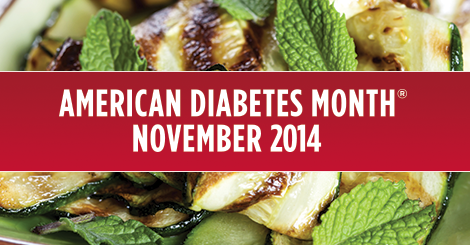November 2021 Monthly Rewards Recap
Our November 2021 Monthly Rewards Recap is now available to read and download!
Our November 2021 Monthly Rewards Recap is now available to read and download!
Our November 2017 Monthly Rewards Recap is now available to read and download. We're in the holiday shopping season, so this issue focuses on all things gift-ready. Don’t miss the boat! Make sure your holiday promotions are rocking and rolling and already reaching your customers or clients.

According to the National Institute of Health (NIH),
Diabetes is a disease in which your blood glucose – or blood sugar – levels are too high. Glucose comes from the foods you eat. Insulin is a hormone that helps the glucose get into your cells to give them energy. With type 1 diabetes, your body does not make insulin. With type 2 diabetes, the more common type, your body does not make or use insulin well. Without enough insulin, the glucose stays in your blood.
You can also have prediabetes, which means that your blood sugar is higher than normal but not high enough to be called diabetes. Having prediabetes puts you at a higher risk of getting type 2 diabetes.
Over time, having too much glucose in your blood can cause serious problems. It can damage your eyes, kidneys and nerves. Diabetes can also cause heart disease, stroke and can even lead to limb amputation. Pregnant women can also get diabetes, called gestational diabetes.
A blood test can show if you have diabetes. Exercise, weight control and sticking to your meal plan can help control your diabetes. You should also monitor your glucose level and take medicine if prescribed.
In its 2014 National Diabetes Statistics Report, the Centers for Disease Control and Prevention (CDC) reports that about 29.1 million people, or 9.3 percent, have diabetes. Of this group, 21 million are diagnosed and living with diabetes while 8.1 million are undiagnosed. Diabetes is the seventh leading cause of death in the United States (in 2010) with an estimated cost – both directly in the form of medical bills and indirectly in the form of lost job productivity, disability, etc. – of $245 billion.
Type 1 diabetes is usually diagnosed in children and young adults and was previously known as “juvenile diabetes.” Only five percent of people with diabetes have this form of the disease. In type 1 diabetes, the body does not produce insulin, but with the help of insulin therapy and other treatments, even young children can learn to manage their condition and live long, healthy lives.
Type 2 diabetes is the most common form. People with type 2 diabetes do not use insulin properly. This is called insulin resistance. At first, the pancreas makes extra insulin to make up for it. But over time, it isn't able to keep up and can't make enough insulin to keep blood glucose at normal levels.
According to the American Diabetes Association (ADA), some common symptoms of diabetes include:
Early detection and treatment of diabetes can decrease the risk of developing the complications later on. Talk to your doctor if you’re experiencing any of the above symptoms, or go to www.diabetes.org and take the Risk Test for type 2 diabetes.
Diabetes is a common disease, yet every individual needs unique care. The ADA encourages people with diabetes and their families to learn as much as possible about the latest medical therapies and approaches, as well as healthy lifestyle choices. Good communication with a team of experts can help you feel in control and respond to changing needs.
Finally, remember to test your blood sugar often, take your medications as directed and stick to the diet and exercise plan recommended for your individual case. And visit the American Diabetes Association’s and International Diabetes Federation’s web sites for valuable resources for living the best life possible!

On this Veterans Day and every day, Hinda remembers those who have served and continue to serve in order to keep our country great!
Happy Veterans Day!
We thank you for your service.